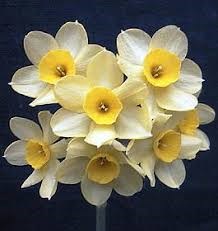As we begin planning our late winter, spring and early summer bulb displays, it’s important to remember: it’s not only about the bulbs – it’s also about the effects they can create in our gardens.
It’s a huge waste of ‘bulb talent’ to simply plunk them in here and there. Their brief display is nice but their die-down time is not. Introducing them to complementary companions is a wonderful way of not only enhancing their own beauty but of also creating some stunning artistic displays.
The added advantage is the cover-up of the unsightly bulb foliage as their above-ground time draws to an end. As for the bulbs themselves, they will be secure among their companion plants from garden tool damage as we weed and change our seasonal displays and this is a huge bonus. Most bulbs will also benefit from the protective root systems of other plants drawing away excess moisture during periods of heavy rainfall. Many companion plants, like euphorbias, protect bulbs from rodents.
The benefits of companion planting are numerous, so let’s create some great bulb synergy.
One of the most challenging situations for bulbs is under trees or in quite shady locations. This is where we need to rely on some rather hardy companions. Tiarellas and heucherellas are still rather unsung garden heroes. These plant families love shade and partial sun, thrive on neglect, flower, remain evergreen and change colours with the seasons.
Tiarellas are commonly known as foam flowers because of their massive floral display of white and pink bottlebrush-like foamy flowers. Their foliage is great too. Beginning with yellow aconites, then snowdrops, crocus, muscari, early species narcissus, tulips and late flowering narcissus, tiarellas provide an awesome accent for all these bulbs before, during and after flowering. Even fall flowering colchicums would be quite at home among tiarellas.
Heucherellas are interesting bigeneric hybrids of heucheras and tiarellas. Because all forms are sterile, they are both repeat and profuse bloomers. For years now, I’ve been thrilled with H. ‘Burnished Bronze’ (zone 4). Its shiny bronze foliage provides a huge lift to any partial sun or shade garden.
Its starry, soft pink flowers provide a nice contrast to its foliage and to other surrounding flowers. Cream and yellow are the most effective colours to use around these plants. From aconites and crocus to mini yellow narcissus, like ‘Tete à Tete’ and ‘Golden Bells’, heucherellas make a wonderful combination plant.
The big news in heucherellas has been the varieties ‘Stoplight’ and ‘Golden Zebra’ (zone 5). These stunning and ever-changing chartreuse, golden and straw coloured winter wonders are perfect complements to anything blue. Blue crocus, blue scilla, blue muscari and blue tulips will be beautifully highlighted by these rich new garden gems. Again, partial sun to full shade is the best location for optimum effect.
For sunny spots, euphorbias make great companion plants. The evergreen varieties perform spectacularly year after year and if kept low, they will provide a great accent for all bulbs. They love hot, dry areas. Their large silvery-blue foliage is a great backdrop for anything pink, lavender, white and purple. I would love to see taller white narcissus and late tall tulips filtering up through the foliage.
In the past, we used myosotis, bellis and erysimiums as bulb companions but frankly, in today’s busy world, most folks don’t have the time for biennials and are looking for easy, effective, long-lasting plant combinations. Perennialization is the way to go and the favourites I’ve listed are simply the tip of the iceberg. So this fall, please blend your bulbs with some of these evergreen perennials and you will look forward to spring like never before.



